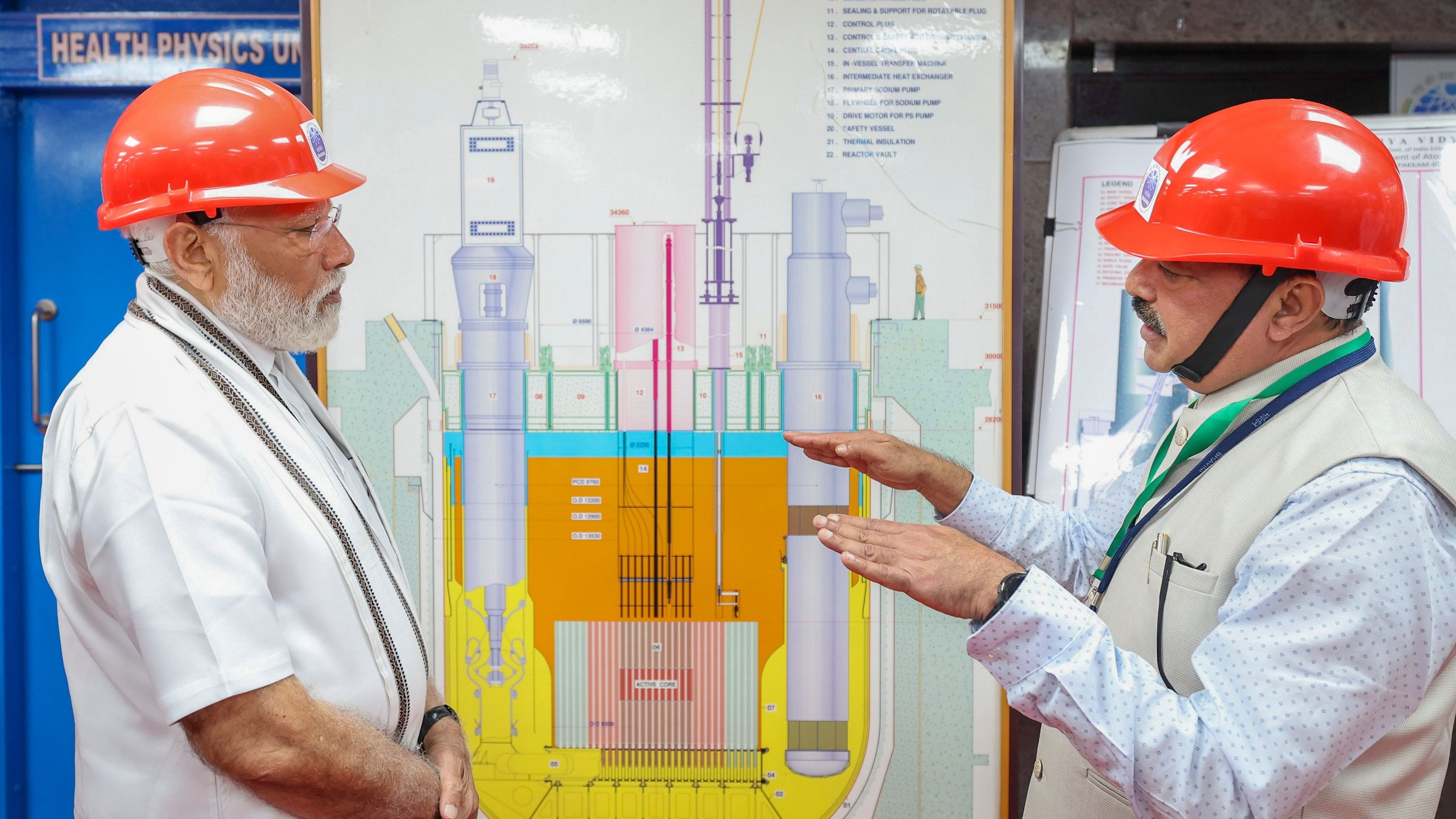
Prime Minister Narendra Modi witnesses initiation of core loading of India's indigenous Prototype Fast Breeder Reactor, at Kalpakkam in Tamil Nadu on March 4, 2024.
Credit: PTI Photo
Chennai/New Delhi: Prime Minister Narendra Modi on Monday witnessed the “core loading” at India’s first indigenous 500 MWe commercial scale Fast Breeder Reactor at Kalpakkam signalling the country’s entry into the vital second stage of the three-stage nuclear programme.
The first step towards generating commercial electricity using a fast breeder reactor that produces more nuclear fuel than what it consumes, took two decades after the Union government set up a dedicated public sector undertaking to construct such nuclear reactors that come with critical technology challenges and safety concerns.
The Prime Minister took a tour of the reactor vault and the control room of the reactor, besides being given a briefing about the salient features of the first prototype of such reactors, the Department of Atomic Energy said.
Once it becomes operational, India will be the second country to have a FBR after Russia.
PM Modi, along with National Security Advisor Ajit Doval, went around the premises of the Indira Gandhi Centre for Atomic Research and spoke to the scientists. Tamil Nadu Chief Minister M K Stalin, however, was absent.
DMK Organising Secretary R S Bharathi said that the Chief Minister “consciously” skipped the event as the reactor would be “harmful” to people who are living in and around the atomic power station near Chennai.
His statement came as Stalin was away in the Cauvery Delta region to inaugurate development projects and lay the foundation stone for new schemes.
Once functional, the fast breeder reactor would usher in the second stage of India's three-stage nuclear power programme as envisioned by Homi Bhabha, the father of Indian nuclear programme. The first stage is dominated by the pressurised heavy water reactors.
Fast breeder reactors “breed” more fissile material than the fuel they consume. They burn plutonium – generated in Uranium-fueled pressurised heavy water reactors and light water reactors – to breed a special type of fissile uranium known as U-233, which is used as fuel.
The FBR will initially use the Uranium-Plutonium Mixed Oxide (MOX) fuel. The Uranium-238 “blanket” surrounding the fuel core will undergo nuclear transmutation to produce more fuel, thus earning the name ‘Breeder’.
The use of another material known as Thorium-232, which in itself is not a fissile material, as a blanket has also been envisaged in the second stage. By transmutation, Thorium will create fissile Uranium-233 which will be used as fuel in the third stage.
The FBR is a stepping-stone for the third stage of the program paving the way for the eventual full utilisation of India’s abundant thorium, found in monazite sands in Kerala beaches.
Construction of the prototype FBR missed multiple deadlines over the last decades as scientists battled with technical roadblocks.
Anti-nuclear activists are concerned about the FBR reactors for two reasons. Firstly, no one is sure about a FBR’s long-term commercial viability and ecological impact in the absence of similar reactors in other nations. Secondly, it uses liquid sodium which is a hazardous material as coolant.
The Prime Minister’s event was preceded by Opposition from several outfits who called the project “unsafe” and “unnecessary” pointing out that this technology had been abandoned by several countries in the past.
